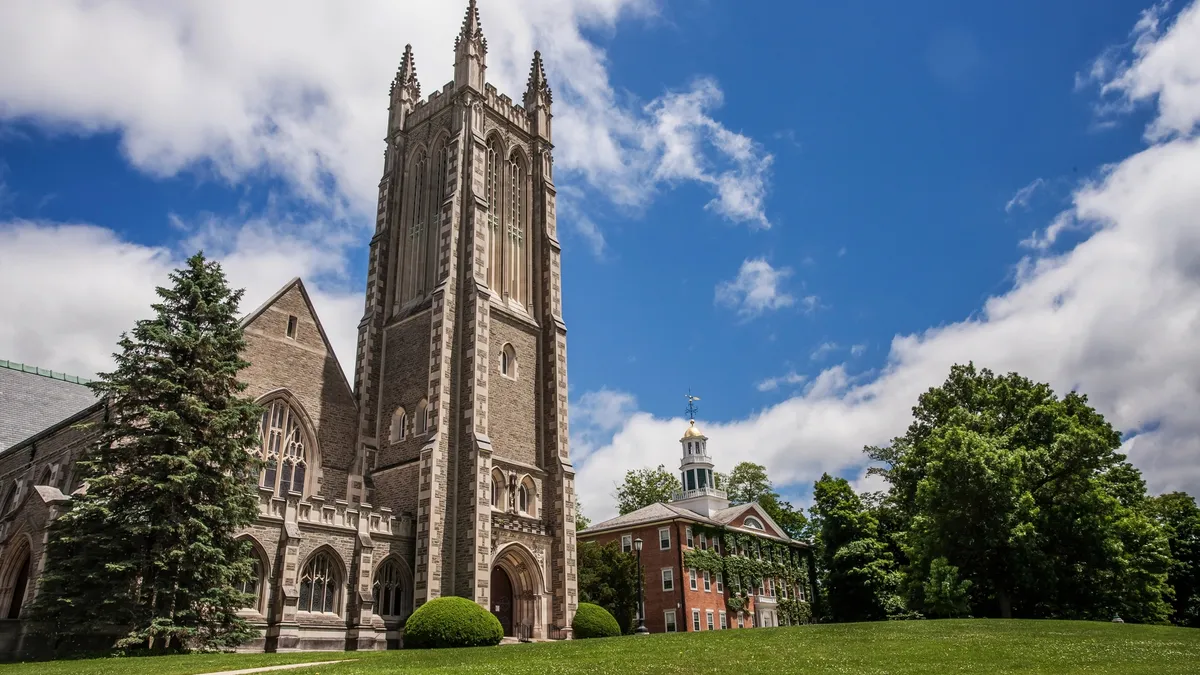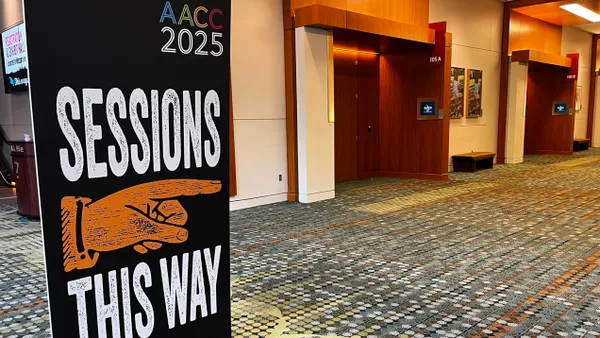Dive Brief:
- Williams College is cutting loans and work requirements from its financial aid packages beginning fall 2022, replacing the funding streams dollar for dollar with grant funding, it announced Wednesday.
- Those and related changes are expected to cost $6.75 million annually in a financial aid budget totaling $77.5 million each year, the wealthy private nonprofit college in Massachusetts said.
- College leaders believe Williams is the first institution in the country to completely eliminate loans and work requirements from financial aid packaging. They hope the changes simplify the financial aid process for students and promote affordability.
Dive Insight:
Admissions practices at private nonprofit colleges that are both wealthy and highly selective have been under the microscope.
This is particularly true as the U.S. Supreme Court considers a case about race-conscious admissions at Harvard University and the University of North Carolina at Chapel Hill, and as the Varsity Blues admissions scandal has sharpened criticism against special treatment for children of donors. Earlier this year, a group of former college students sued top-ranked private nonprofit universities, alleging they took part in a price-fixing scheme that drove up the price of college.
Williams becomes at least the third top-ranked institution in the last seven months to make a major change to its admissions processes.
Washington University in St. Louis said in October it would start admitting first-time, full-time domestic undergraduates on a need-blind basis after its endowment swelled amid investment market gains. Amherst College, in Massachusetts, said later that month that it was ending legacy admissions, the practice of giving children of alumni preference.
Williams is already among a very small number of institutions that are both need blind and meet full need for domestic students — meaning they admit students regardless of how much financial aid they will need and that they pledge to provide financial aid packages that meet students' entire demonstrated need.
Williams also prides itself on adopting a "need-seeking" approach since the early 2000s, under which it makes a point of recruiting and supporting students from underprivileged backgrounds. About 20% of the college's incoming undergraduate class first enrolling in 2019-20 received federal Pell Grants, considered a proxy for low-income status, according to federal data.
For a brief period before the Great Recession hurt institutions' finances across higher ed, Williams did not package student loans in its aid packages. Wednesday's announcement marks a return to that no-loan policy, plus the elimination of campus job and summer earnings requirements.
Currently, any Williams student receiving financial aid is asked to work 6 to 8 hours per week, said Liz Creighton, dean of admission and student financial services. Sometimes that is through the federal work-study program, but it can also include other jobs on campus.
"We expect some students will choose to continue to work," Creighton said. "The difference is that any money they earn from those hours worked is theirs to keep for whatever they see fit."
The college also pays the cost of textbooks, class materials, health insurance, trips home, summer storage and other needs of students receiving financial aid. Last year, it adjusted its financial aid formulas to lower parent contributions for low- and middle-income families. Consequently, one in six families' contributions fell by $4,500 last year, the college said.
"We are focused very much on our own students and ensuring they have full access to the Williams experience," the college's president, Maud Mandel, said. "We're not in the business of requiring our aided students to work for Williams, but rather to take full advantage of everything we have to offer here in the summer and full years they have on campus."
Most of the policy's annual projected price tag, $5.75 million, will go toward eliminating work requirements and loans. The remaining $1 million will cover reworked financial aid formulas to benefit low-income families and middle-income families.
The college defines low-income families as earning less than $75,000 per year and middle-income families as earning between $75,000 and $175,000 annually.
Tuition, room, board and fees are listed at $77,300 at Williams for 2022-23. The college's average financial aid package is worth $67,000.
The college expects to enroll 2,121 undergraduates next year. More than 1,100 typically receive financial aid from the institution.
Leaders didn't discuss increasing the number of students admitted, Mandel said. Nor is Williams weighing eliminating legacy status as an admissions factor.
"We currently do consider legacy as one of many factors that we take into account when we assess our student applicant pool," Mandel said.
The college also operates an early admission program, through which it typically enrolls about 200 students, or roughly 40% of every class enrolling.
Williams had the 30th largest endowment in the country in fiscal 2021, according to an annual study from the National Association of College and University Business Officers. It rose 46.8% year-over-year to $4.2 billion.














